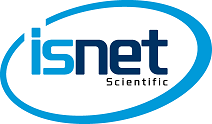The GLE inversion software was formally verified to check the correctness of the routines by running it against a specific test case.
We assumed that
- the injection profile at the Sun consisted of four consecutive release episodes of intensity [0.5,1,1,0.5]x1030 p/(s sr).
- the spectral index of the source was γ = 5, and
- the radial mean free at 2 GV λ0 = 0.1 AU.
to compute the expected relativistic proton intensities at 1 AU with the interplanetary transport model.
We then assumed a certain evolution of the interplanetary magnetic field at the Earth's bow shock and a set of NM stations with cutoff rigidities and asymptotic directions. For simplicity, we took actual the OMNI magnetic field data and the NM asymptotic directions during GLE60.
With these assumptions, we were able to compute the synthetic count rate increases for a set of NM stations.
We then inverted the synthetic NM data using the GLE inversion software. The best fit scenario assumed to create the synthetic data was successfully recovered. Check the results here.

 hesperia [dot] info [at] hesperia-space [dot] eu
hesperia [dot] info [at] hesperia-space [dot] eu










